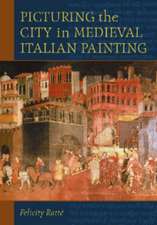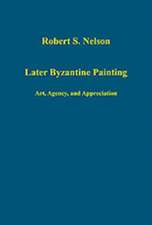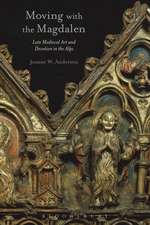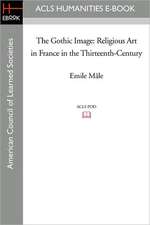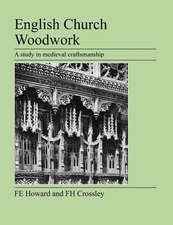The Origins of Visual Culture in the Islamic World: Aesthetics, Art and Architecture in Early Islam
Autor Mohammed Hamdouni Alamien Limba Engleză Paperback – 29 iun 2018
Preț: 170.50 lei
Nou
Puncte Express: 256
Preț estimativ în valută:
32.62€ • 34.06$ • 27.00£
32.62€ • 34.06$ • 27.00£
Carte tipărită la comandă
Livrare economică 04-18 aprilie
Preluare comenzi: 021 569.72.76
Specificații
ISBN-13: 9781788310963
ISBN-10: 1788310969
Pagini: 200
Ilustrații: 38 bw integrated
Dimensiuni: 138 x 216 x 22 mm
Greutate: 0.25 kg
Editura: Bloomsbury Publishing
Colecția I.B.Tauris
Locul publicării:London, United Kingdom
ISBN-10: 1788310969
Pagini: 200
Ilustrații: 38 bw integrated
Dimensiuni: 138 x 216 x 22 mm
Greutate: 0.25 kg
Editura: Bloomsbury Publishing
Colecția I.B.Tauris
Locul publicării:London, United Kingdom
Notă biografică
Mohammed
Hamdouni
Alami
is
an
associate
researcher
in
the
Archaeological
Research
Facility
at
the
University
of
California,
Berkeley.
He
was
formerly
a
professor
of
architecture
and
art
history
at
the
Ecole
Nationale
D'Architecture
in
Rabat
and
holds
a
Ph.D.
from
the
University
of
California,
Berkeley.
He
is
the
author
of
Art
and
Architecture
in
the
Islamic
Tradition:
Aesthetics,
Politics
and
Desire
in
Early
Islam
(I.B.Tauris,
2010,
2013).
Cuprins
Chapter
1:
Introduction:
From
La
Dolce
Vita
to
Intellectual
DelectationChapter
2:
An
Aesthetic
Revolution:
From
Trance
to
Meaning,
a
Metamorphosis
of
Islamic
AestheticsChapter
3:
The
Ethics
of
Arts
and
CraftsChapter
4:
Painting
in
a
World
of
ImagesChapter
5:
Stone
Metaphors
and
Architecture's
WhispersChapter
6:
Conclusion



